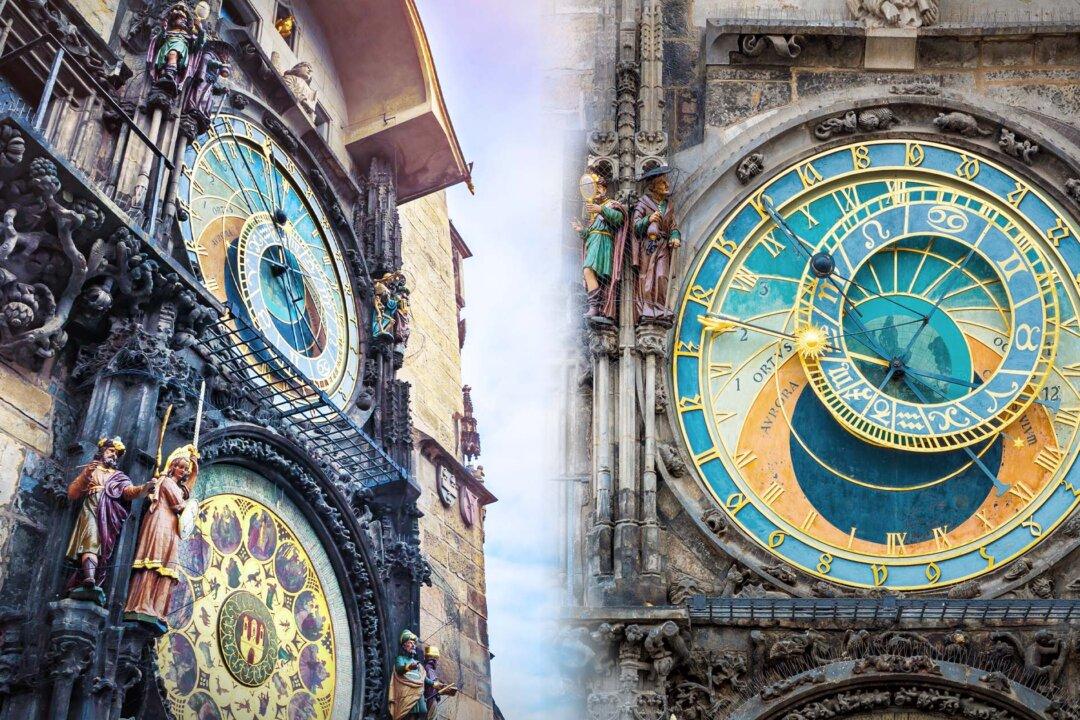A mechanical wonder over six centuries old is mounted on the south wall of the Old Town Hall in Prague, located in the Old Town Square. Nested in ornate gothic decoration, this steampunk predecessor is still ticking today.
Called the astronomical clock, it’s the oldest working clock of its kind in the world today and dates back to the early 15th century. Besides simply telling time, this chronometer of curiosities carries both history and legend within its clockwork innards, celestial dials, hands, faces, and statues.






